Q&A – Ask Neil: August 8, 2024
(Please read these instructions carefully.)
Before you post your question, please look at recent issues to see if someone else has already asked it. You might find your answer there.
How to submit your question…
(Note: You may need to allow a pop-up window to come up in order to get the link for sending your photo(s). If you have already submitted your question and didn’t see the pop-up window, please click here.)
• Click the link provided below to post your question. After you submit your question, a new window will pop up giving you the address to which you can e-mail a SHARP, HIGH-RESOLUTION PHOTO to accompany your question. Please DO NOT SEND THUMBNAIL PHOTOS in case I need to zoom in to see things.
• Click here to post your question.
• Please ONLY POST YOUR QUESTION ONE TIME. We can only accept a set number of questions each week, and when we get duplicates it costs other people their chances.
• One question per reader, please.
• Please use this only for posting questions – not for standard emails.
• Watch for your answer in the following week’s e-gardens.
• I choose those of greatest general interest. For example, plant IDs seldom make the cut.
• I must have your first name or initials.
• I must have your city or county. (Texas is a very large state.)
QUESTION 1
SHOULD I TRIM MY HOLLY BACK?
Question: Grasshoppers have eaten most of this Nellie R. Stevens holly along with crape myrtles, althaeas, etc. Should I cut this holly way back this fall, or will it come back and leaf out in the spring? Carol S., Coleman.
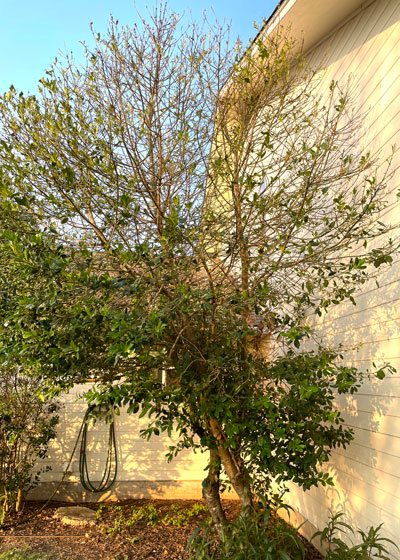
Answer: Trimming it would be a good plan, and you could actually do so now. If you wait until fall there is a good chance it will leaf out before then and you would end up penalizing it for trying.
I’m actually more concerned that it is too close to your house and that the foliage and branches are going to rub into the side of your home. This is your chance to get its size reduced, at least for the time being. It’s a shame it’s not several feet farther out. Oakland holly might have made a better plant, although it, too, would have needed to be 4 or 5 ft. out from the house. Follow your pruning up with an application of a high-nitrogen, lawn-type fertilizer and a deep soaking.
QUESTION 2
WHY ARE LEAVES OF CRAPE MYRTLE YELLOWING AND FALLING?
Question: Why are so many leaves of my Dallas Red crape myrtle yellowing and falling off? Steve H., Tyler.
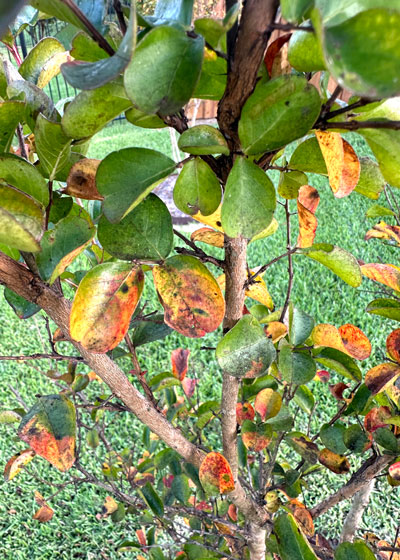
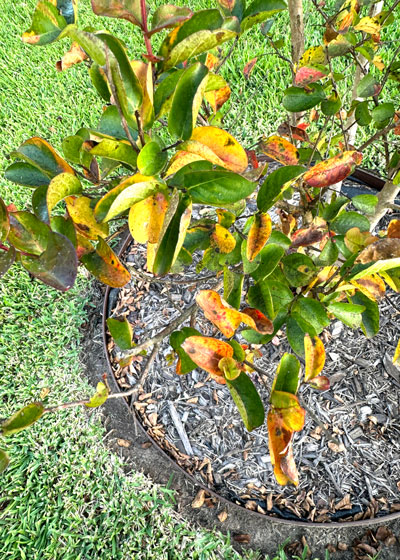
Answer: The plants have been visited either by crape myrtle bark scale (white flecks that adhere to the leaves and twigs) or crape myrtle aphids (BB-sized, pear-shaped insects that cluster around the new growth). Both insects secrete sticky honeydew that will coat the leaves. You can see it glistening on the top surfaces of some of the leaves. That will cause premature leaf drop, and it will also allow black sooty mold fungus to grow in the sugary honeydew substrate. Both can be controlled (actually prevented) by application of a systemic insecticide. Texas A&M research has shown that Imidacloprid works best when it is applied as a soil drench in mid-May, before either problem has begun. At this point, if you see either insect, apply the insecticide as a spray to the foliage and stems.
QUESTION 3
HOW CAN I STOP THIS WEED GROWING IN MY ST. AUGUSTINE?
Question: What is this growing in my St. Augustine, and what can I use to get rid of it? It pulls up easily, but it keeps coming back. Julie T., Longview.
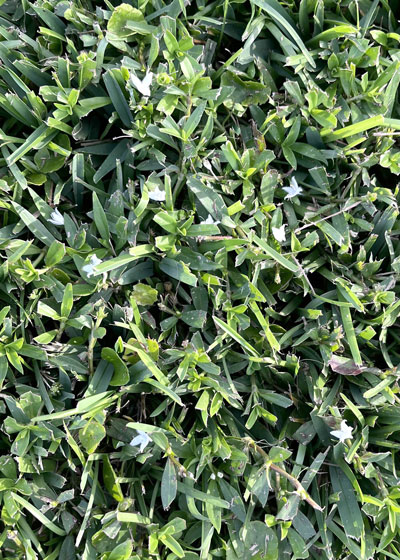
Answer: You’re right – pulling isn’t going to eliminate Virginia buttonweed. It’s terribly invasive. The fact that it looks a little bit like St. Augustine makes it easier for it to creep up on you before you know you’ve been invaded.
Here was part of an answer I gave to a reader in Kennedale a couple of years ago:
Broadleafed weedkillers containing 2,4-D are your best option. You’ll need to start in the early spring as things begin to green up, and then go after it repeatedly into the summer. Once it gets really warm (high 80s or into the 90s) you’ll need to spot-treat if you have St. Augustine, as it can be burned by the 2,4-D.
(Note: If you have areas that are particularly full of the buttonweed now, you may opt to spray once temperatures moderate a bit in September instead of just waiting until spring.)
I did a little searching of what the better southern ag schools had to suggest. Here are some of their posts.
Louisiana State University (This is very good, easy-to-understand information.)
Clemson University (South Carolina)
QUESTION 4
HOW CAN I GET RID OF VIRGINIA CREEPER?
Question: As I’ve lost trees, the Virginia creeper coming from my neighbor’s yard has gotten more sunlight, allowing it to spread rapidly. Now it’s crowding out my Asian jasmine and liriope. How can I get rid of it? Susan M., Arlington.
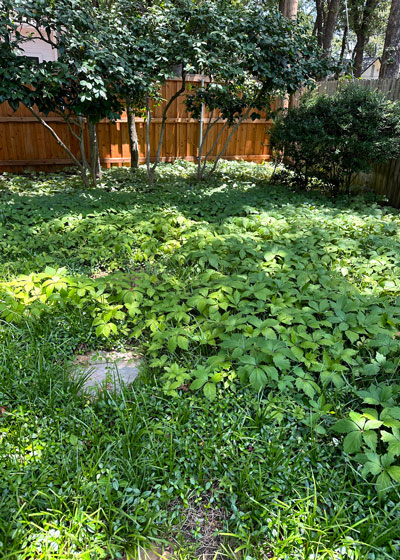
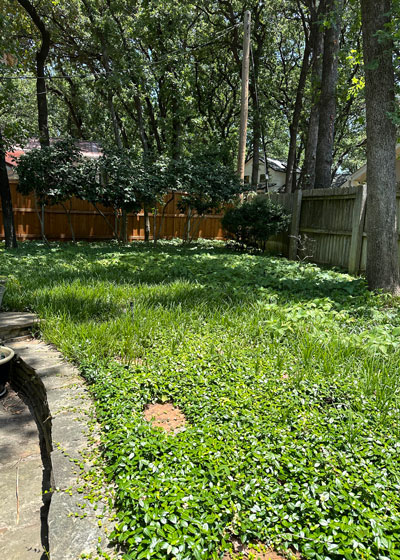
Answer: Let me begin by quelling the angst of those who think it must be related to poison ivy and therefore could cause massive eruptions of the skin rashes all over your body if you follow my suggestion. Not the case at all.
To your answer: I’ve had similar invasions, albeit not quite this heavy. You wouldn’t believe how lightly rooted Virginia creeper is. If you take hold of a cluster of stems and pull, it will come up like a cheap toupee. You’ll be able to pull your way through scores of square feet in just a couple of hours. If that’s unappealing or painful for you, hire someone to do the pulling for you. I could suggest a couple of herbicides that probably would work, but I really don’t want to put your groundcovers at risk when I know pulling will be easy and reliable.
QUESTION 5
WHAT WILL CONTROL THE INSECT ON MY BOUGAINVILLEA?
Question: I have an insect attacking my potted bougainvillea. I have not seen it. I have sprayed with dish soap/water and vinegar/water in hopes of not using pesticides. If I must resort to one, which is best? Linda H., Georgetown.
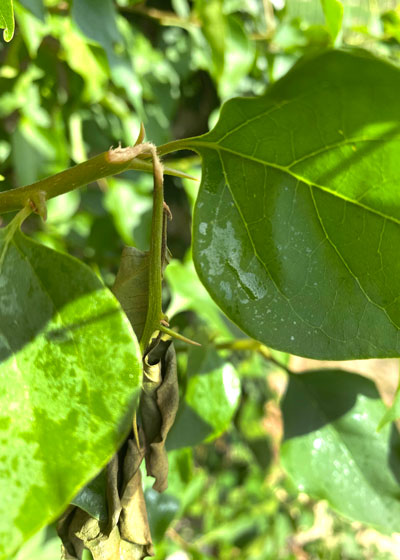
Answer: I don’t see any insect or insect damage I recognize, either. I do, of course, see the dangling twig. That might have been caused by an animal including a bird, squirrel, rat, or even, depending on where it is, deer, that failed to eat through all the way. It just doesn’t look like insect damage.
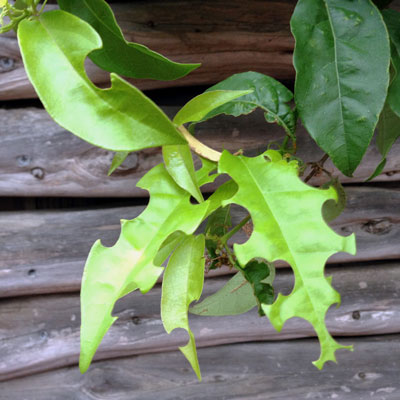
I was so sure that you were going to ask about leaf cutter bees that that’s what I expected to find when I opened your photo. I do, to some degree, see possible damage in the leaf in the lower right. They cut perfect half circles out of the leaves and then carry them away to construct their nests. But they don’t do any harm and there is no way to stop them. I’ve included my own photo of one of them doing her work for your comparison. They’re fascinating insects.
I see no call for insecticide and I think I’d try to find an organic insecticide instead of the home remedies in the future whenever you decide you do need to spray.
QUESTION 6
IS THIS GRAY LEAF SPOT ON MY ST. AUGUSTINE?
Question: Is this gray leaf spot on my St. Augustine? Johnny M., Collin County.
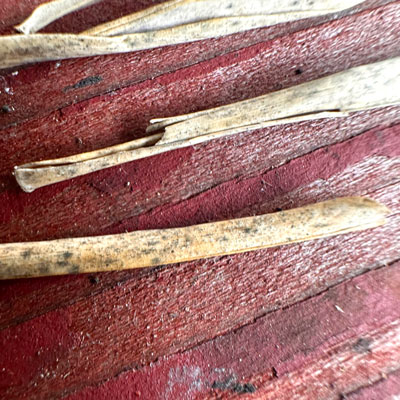
Answer: No. This is just old grass blades that are starting to decay. I’m attaching a copy of my own gray leaf spot photo so you can make the comparison yourself.
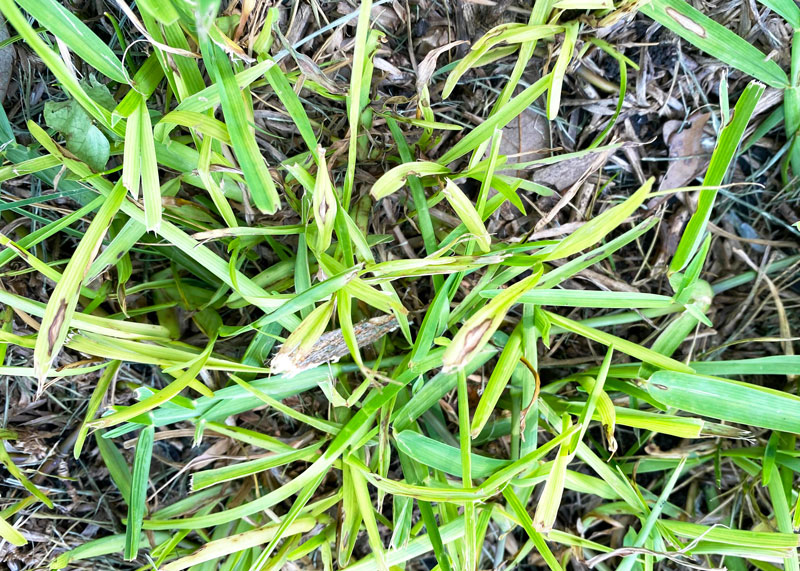
QUESTION 7
WHY IS THE CANOPY OF MY CHINESE PISTACHIO SO SPARSE?
Question: Why is the canopy of my Chinese pistachio so sparse? It’s been full every year since 2008 until this year. The only mechanical damage that could have occurred was tilling the soil in the surrounding sod in mid-April for replacement. David S., Allen.
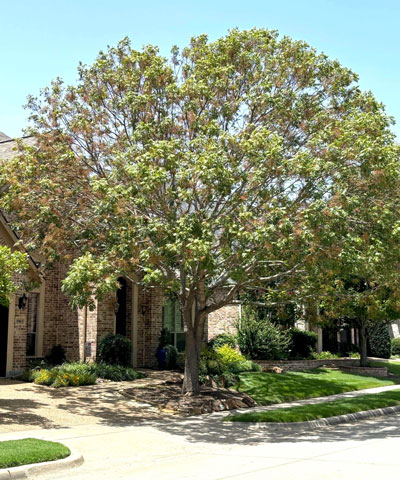
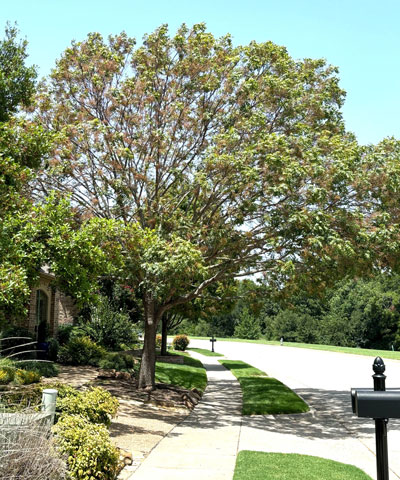
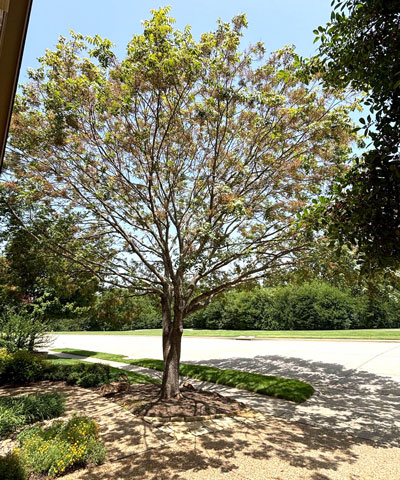
Answer: The tilling is one possibility, especially if the tiller went more than 1-2 in. deep. A lot of the important “feeder” roots would have been lost.
Your tree is also rootbound by all the surrounding concrete. Over a period of time, that can eventually develop into a problem for a really large tree like a pistachio. I notice the park across the street from your house. My wife and I travel almost daily in Allen, and I see streets that look like yours. Some of them have very shallow soil with white rock beneath. Builders grade as they need to so they can develop their neighborhoods and sometimes there just isn’t much soil left. That could add to the “rootbound” situation.
Finally, I see that your tree is a female with a heavy load of fruit. That would be dragging it down at the expense of the canopy.
QUESTION 8
CAN OUR MAPLE BE SAVED?
Question: We had a local nursery plant a Summer Red maple in November 2022. We neglected to remove the tree’s planting stakes. The tree has grown well and seems healthy. I removed the ties as best I could. Will the tree survive? Is there anything else I need to be doing to help it? Camille N., no city given.
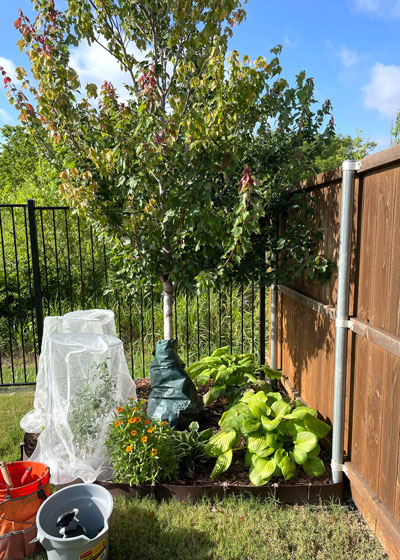
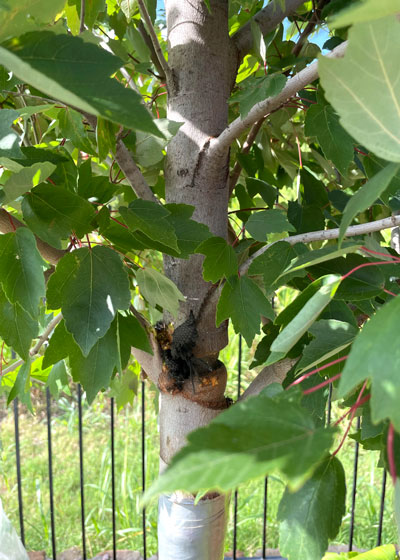
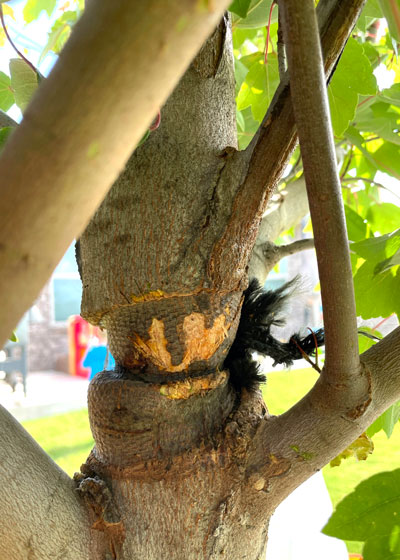
Answer: Pray. It’s going to be touch and go. The trunk is severely weakened by having that constriction in its middle. If a gust of wind were to hit the top just right it could snap the tree into two pieces. I note how vigorously the new shoot is growing on the side branch just below the girdled area. That’s not a good sign because that means that the tree has sensed there was a serious problem and has already started to make adjustments in its top growth. Just wait and see.
